Calf stretches are incredibly important when it comes to maintaining healthy legs regardless of whether you’re an active athlete or constantly on the go. In this guide we will delve into the best calf stretches for activities and address common mistakes that should be avoided. Additionally, we’ll provide visuals to ensure that you’re on the path, towards enhancing your calf muscles.
Understanding the Significance of Calf Stretches
Before we dive into the stretches it’s crucial to comprehend why calf stretches play such a role;
1. Injury Prevention; Tight calf muscles can significantly increase the risk of strains and injuries during activities. Regular stretching helps maintain flexibility and reduces the likelihood of muscle-related injuries.
2. Performance Enhancement; Properly stretched calf muscles can enhance your performance across a range of activities whether it’s running, cycling, or engaging in sports. Flexibility truly makes a difference.
3. Alleviating Discomfort; Anyone who has experienced tightness or discomfort in their calves knows how unpleasant it can be. Incorporating stretching exercises can help alleviate this discomfort and improve well-being.
Now let’s explore some calf stretches tailored for different activities.
1. Classic Calf Stretch (for all activities);
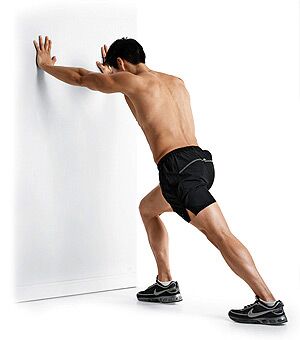
For this calf stretch stand in front of a wall or a sturdy object.
Place your hands on the wall at shoulder height.
Take one foot back ensuring that your heel is on the ground.
Bend your knee while leaning your body forward.
You will feel a stretch in the calf of your leg.
Hold this position for 20 to 30 seconds.
Then switch to the other leg.
2. Runners Calf Stretch (for runners and joggers);
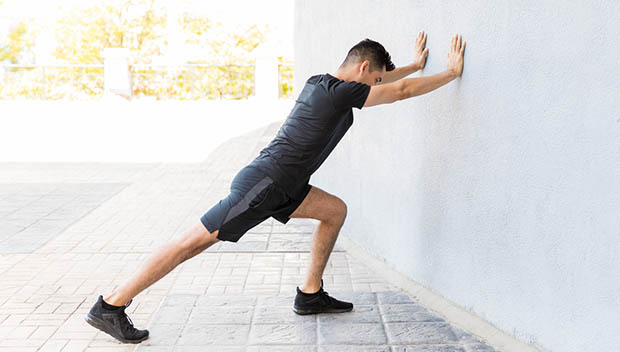
To perform this calf stretch stand facing a wall.
Position your hands on the wall at shoulder height.
Step one foot back keeping it straight with toes pointing forward.
Bend your knee.
Lean your body forward slightly to deepen the stretch in your calf muscle of the extended leg.
Hold for 20 to 30 seconds before switching to the leg.
3. Seated Calf Stretch (for desk-bound individuals);
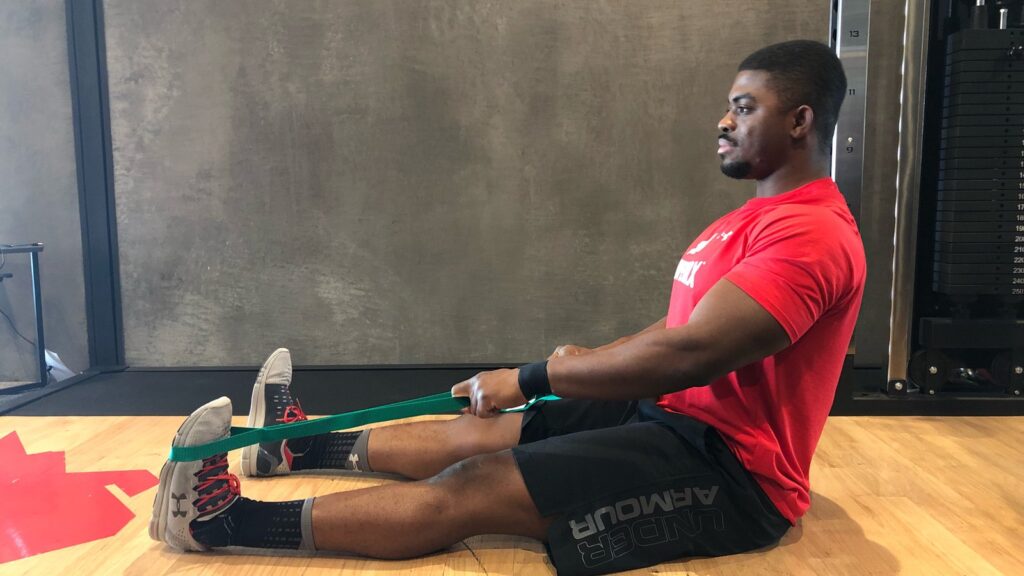
If you spend a lot of time sitting at a desk this seated calf stretch can be beneficial for you.
Sit on the floor with both legs extended in front of you.
Take a resistance band or towel and loop it around the ball of one foot while holding onto it with both hands.
Gently pull the band/towel towards you flexing your foot and creating a stretch in your calf muscle.
Hold for around 20 to 30 seconds.
Then switch to the other leg.
4. Calf Stretch on Steps/Stairs (for climbers and hikers);
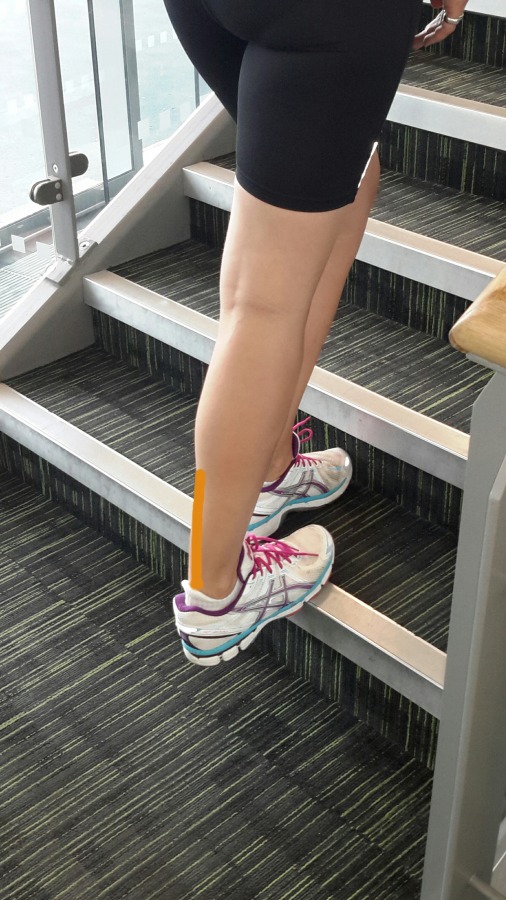
Calf Stretch on Stairs
Stand at the edge of a step or staircase with your heels hanging off.
Let your heels drop below the level of the step.
Experience that satisfying stretch in your calf muscles.
Maintain this position for about 20 to 30 seconds then switch legs.
5. Calf Stretch for Cyclists (for bikers);
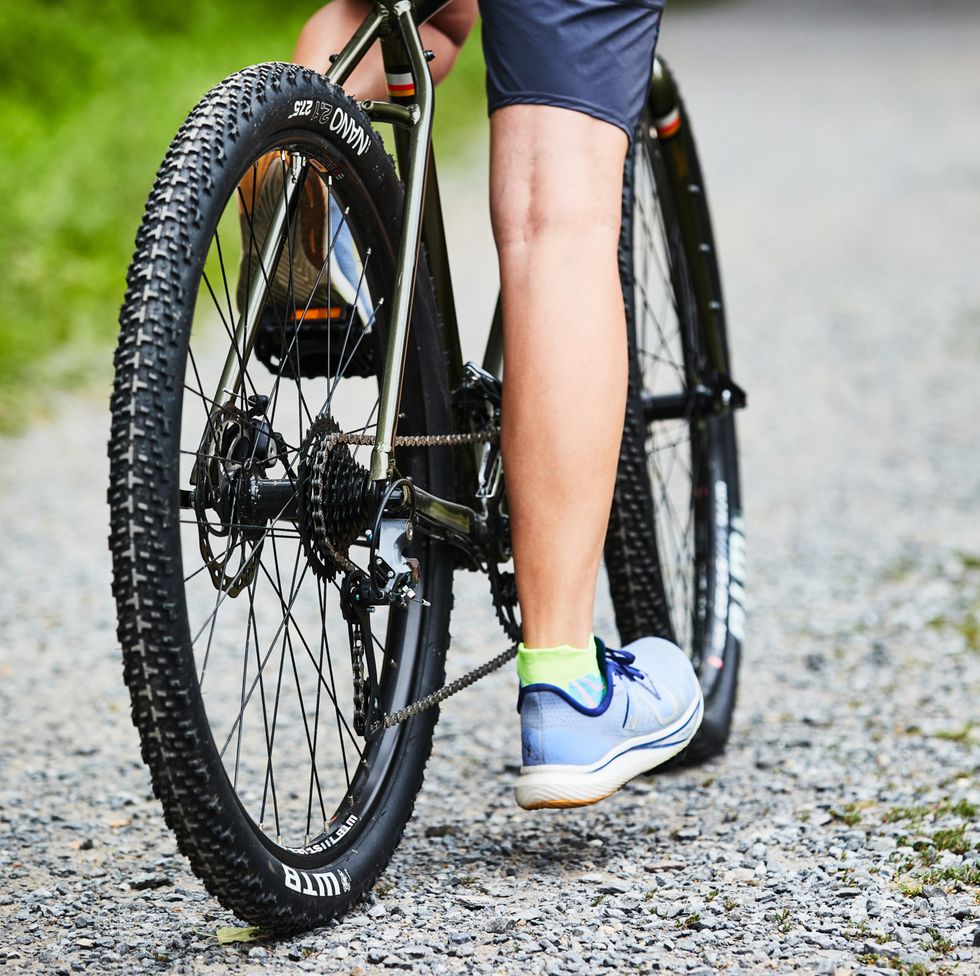
Calf Stretch for Cyclists
Note: Bike will need to be static and in a balanced position to perform this stretch
Position your bike pedal
Place one foot on the pedal.
Press down with your heel extending your leg fully.
Feel the stretch in the calf muscle of your leg.
Hold this position for 20 to 30 seconds then switch to the other leg.
Avoiding Common Mistakes
While calf stretches offer benefits it’s crucial to execute them. Here are some common mistakes you should steer clear of;
1. Avoid bouncing or jerking movements during your stretches as they can lead to muscle strains or injuries.
2. Only stretch until you feel tension, not pain. Overstretching can cause discomfort and potential injury.
3. Maintain posture throughout your stretches to ensure form and effectiveness. For instance make sure you maintain posture by keeping your back and chest lifted while performing a calf stretch, against a wall.
4. Don’t overlook the importance of stretching both calves even if you experience tightness or discomfort in one. Ignoring one side can create muscle imbalances.
5. Remember to warm up before stretching to avoid working with muscles. Engage in activities like walking or jogging before starting your stretching routine.
Include these calf stretches, as part of your exercise regimen to enhance your performance and prevent any discomfort. By executing the stretches your calf muscles will reward you with increased strength and flexibility. Enjoy your stretching session! 🦵💪
